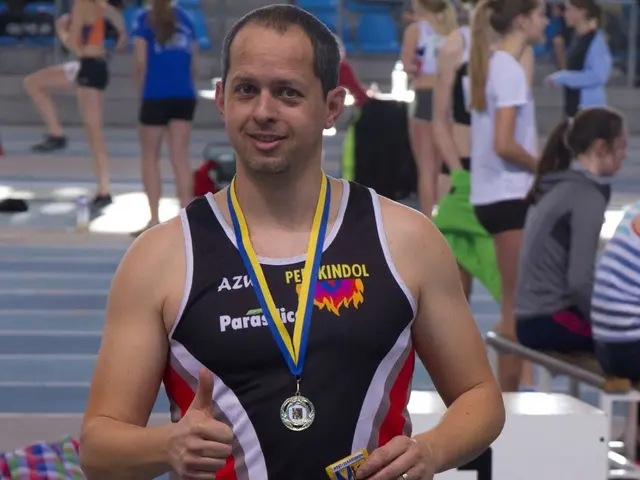Exploring the Differences Between Spastic and Dyskinetic Cerebral Palsy
Cerebral palsy (CP) is a group of neurological disorders that affect muscle tone, movement, and motor skills. Two of the most common forms of CP are spastic and dyskinetic, each with distinct characteristics.
Spastic cerebral palsy, the most prevalent form (accounting for about 70-80% of cases), is caused by damage to the corticospinal (pyramidal) pathways. This results in increased muscle tone (hypertonia), leading to muscle stiffness and exaggerated reflexes (spasticity). This can affect one side of the body (hemiplegia), both legs (diplegia), or all four limbs (quadriplegia).
On the other hand, dyskinetic cerebral palsy (also called athetoid cerebral palsy) results from damage to the basal ganglia and thalamus (extrapyramidal brain regions). It involves fluctuating muscle tone, with both hypertonia and hypotonia, causing involuntary, unpredictable, and often jerky or writhing movements such as dystonia (twisting) and choreoathetosis (slow, continuous writhing movements). These movements worsen with voluntary movement attempts or stress and can affect the whole body including facial muscles, making speech and feeding difficult.
The differences between these forms of CP reflect distinct underlying neurological damage and require different therapeutic approaches.
| Feature | Spastic Cerebral Palsy | Dyskinetic Cerebral Palsy | |------------------------------|-------------------------------------------------|----------------------------------------------------| | Brain area affected | Corticospinal (pyramidal) pathways | Basal ganglia and thalamus (extrapyramidal) | | Muscle tone | Mostly increased (hypertonia), causing stiffness | Fluctuates between increased and decreased tone | | Main movement characteristics | Stiff, awkward, jerky movements due to spasticity | Involuntary, slow writhing, twisting, or jerky movements | | Prevalence | ~70-80% of CP cases | ~15% of CP cases | | Impact on voluntary movement | Difficulty due to stiffness | Difficulty due to involuntary movements interfering with control | | Typical distribution | Can affect one side, legs, or all limbs | Movements affect limbs and sometimes face and trunk |
Early diagnosis, a multidisciplinary approach to treatment, and ongoing support can significantly improve the quality of life for individuals living with both forms of CP. For dyskinetic CP, medications, physical therapy, occupational therapy, speech therapy, assistive devices, botulinum toxin injections, and deep brain stimulation are potential treatment options.
Cerebral palsy can manifest from birth or develop later in life, with the underlying brain problem remaining stable even as the individual's needs evolve. Various factors can contribute to CP, including infections or medical complications during pregnancy, strokes occurring in the womb or after birth, untreated jaundice, genetic disorders, complications during birth, shaking incidents in infancy, and injuries sustained in early childhood.
Sources: [1] National Institute of Neurological Disorders and Stroke. (2021). Cerebral Palsy Fact Sheet. https://www.ninds.nih.gov/Disorders/Patient-Caregiver-Education/Fact-Sheets/Cerebral-Palsy-Fact-Sheet [2] Centers for Disease Control and Prevention. (2021). Cerebral Palsy. https://www.cdc.gov/ncbddd/cp/index.html [3] American Academy of Neurology. (2017). Practice Guideline Update Summary: Diagnosis of Cerebral Palsy: Report of the Guideline Development, Dissemination, and Implementation Subcommittee of the American Academy of Neurology. Neurology, 88(15), 1429-1436. [4] Rosenbaum P, O'Brien PC, Paneth N, et al. (2007). Diagnosis of cerebral palsy: an evidence-based approach. Pediatrics, 119(6), e1360-e1376. [5] Thacker SB, Wade LA, Rosenbaum P, et al. (2011). Diagnosis of cerebral palsy in infants and young children: clinical practice guideline by the American Academy of Neurology and the Child Neurology Society. Neurology, 77(20), 1785-1792.
- Focusing on health-and-wellness for individuals with cerebral palsy, early diagnosis and a multidisciplinary approach to treatment, which may include medications, physical therapy, occupational therapy, speech therapy, assistive devices, botulinum toxin injections, and deep brain stimulation, can significantly improve their well-being.
- The science of medical-conditions like cerebral palsy is continually evolving, with factors such as infections during pregnancy, strokes, genetic disorders, complications during birth, and injuries sustained in early childhood contributing to its manifestation. Understanding these factors and their impact on the brain can help in the development of more effective treatments for improving the well-being of those affected.




